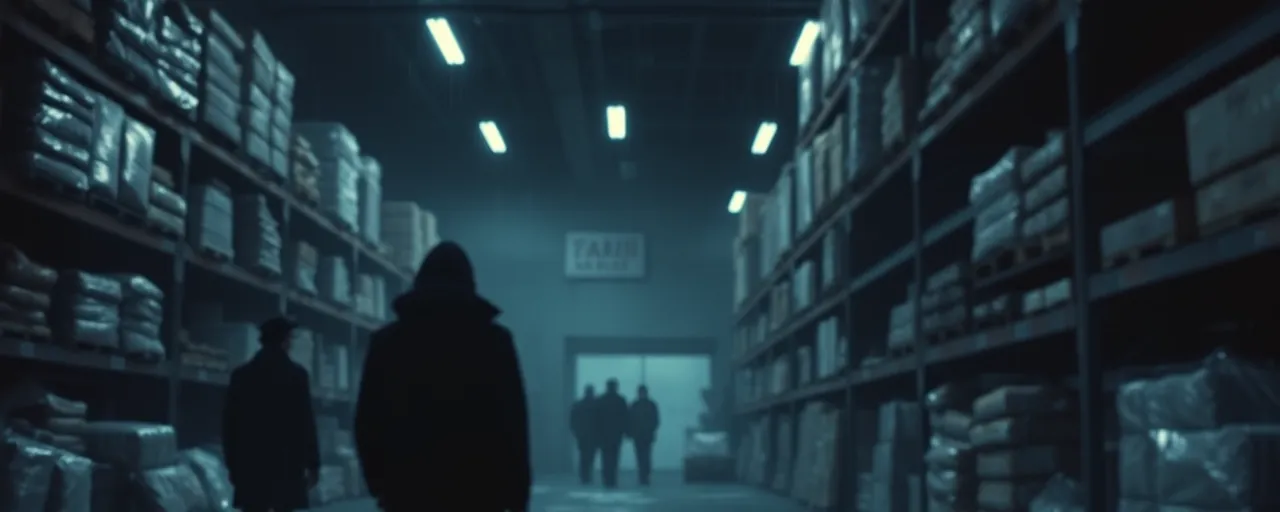A Sentence That Echoes Beyond the Courtroom
In a Pittsburgh federal courtroom, a judge handed down a five-year prison sentence to Durrell Waters, a 41-year-old local, for his role in a sprawling retail theft scheme. The case, which unfolded over years, wasn’t just about stolen goods. It revealed a web of harm touching everyone from store clerks to online shoppers, exposing the deep costs of organized crime in plain sight.
Waters’s conviction for money laundering and conspiracy stemmed from a sophisticated operation that turned shoplifted health and beauty products into millions in online profits. The sentence, delivered on April 9, 2025, wasn’t only about punishing one man. It aimed to send a message about the far-reaching damage caused by fencing stolen goods, a crime that quietly reshapes daily life.
The Mechanics of a Criminal Marketplace
From 2013 to 2016, Waters ran resale businesses that served as fronts for a fencing operation. His stores, with names like Trader Electronics and Last Call Entertainment, bought brand-new retail items at a fraction of their value from repeat shoplifters, court records show. These products, ranging from teeth whiteners to DVDs, were then sold through Amazon and eBay storefronts, generating over $4.3 million in revenue. The sheer scale of the operation stunned investigators, who uncovered hundreds of thousands of stolen items passing through Waters’s hands.
The case sheds light on how online marketplaces can become unwitting conduits for crime. Retail theft networks exploit the anonymity of e-commerce, blending stolen goods with legitimate sales. Law enforcement agencies, alongside platforms like eBay, have rolled out measures like seller verification and AI-driven monitoring to catch bad actors. Yet, the persistence of these schemes shows how criminals adapt, finding new ways to slip through the cracks.
A Ripple Effect on Stores and Shoppers
Retail theft doesn’t stop at the store shelf. Losses from organized crime cost retailers billions yearly, with estimates pegging 2022’s toll at $112.1 billion. Those costs don’t vanish, they land in consumers’ wallets through higher prices. Stores, desperate to stem the tide, lock up everyday items like shampoo or razor blades, turning shopping trips into obstacle courses. Some even close locations in high-crime areas, leaving communities with fewer options.
Beyond economics, the human toll stands out. Many shoplifters in Waters’s network battled drug addiction, using their earnings to fuel dependencies. This cycle, tied to the broader opioid crisis, traps individuals in crime while burdening public health systems. Retail workers face growing risks too, as thefts turn aggressive, creating tense environments where safety feels uncertain.
Balancing Punishment and Prevention
The judge in Waters’s case emphasized deterrence, noting the need to discourage others from following his path. Federal sentencing guidelines, shaped by decades of reform, aim to balance punishment with fairness. While judges now have flexibility to weigh factors like intent and harm, some argue these rules still fall short, hitting low-level players hard while major orchestrators sometimes slip away. Waters’s five-year term reflects this tension, a stern response meant to disrupt a damaging cycle.
Efforts to curb retail theft extend beyond prison sentences. Retailers are pouring funds into advanced security, from facial recognition to inventory trackers. Lawmakers, meanwhile, push for stricter e-commerce regulations, like California’s recent laws tightening seller oversight. Addiction treatment programs in jails show promise in breaking the theft-drug link, but scaling them up remains a challenge amid strained resources.
What the Case Leaves Behind
Waters’s conviction closes one chapter, but the broader story of retail theft keeps unfolding. His case pulls back the curtain on a crime that thrives in the shadows, linking corner stores to global marketplaces. It’s a reminder that every stolen bottle of lotion or box of vitamins carries a cost, one paid by shoppers, workers, and communities caught in the fallout.
As courts, retailers, and lawmakers grapple with solutions, the path forward demands a delicate balance. Locking up goods and offenders alone won’t untangle the mess of addiction, economic pressure, and opportunity driving these crimes. The Pittsburgh case, raw and complex, underscores a truth, progress will come from tackling the roots, not just the branches, of this persistent problem.
